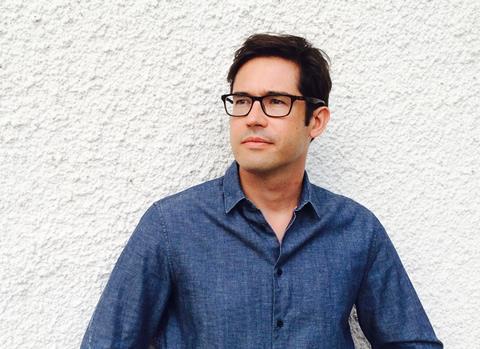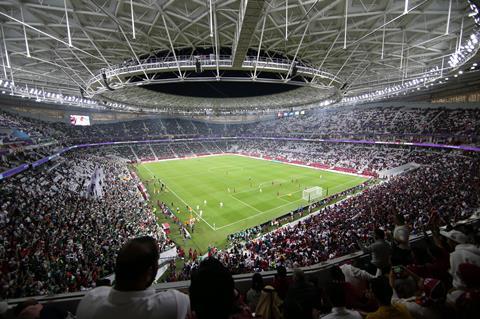The 2022 World Cup stadiums in Qatar have been dogged by controversy around workersŌĆÖ rights. Ben Flatman asks whether architects are responsible for the ethics of their clients

The football World Cup in Qatar has been dogged by scandal since the outset. Allegations of bribery and money-laundering surrounded the awarding of the competition to the tiny hydrocarbon-rich nation, which had never qualified for a previous World Cup finals.
>> Also read: Designing for the desert: how British architects approached the 2022 World Cup
The matches were rescheduled to winter to avoid QatarŌĆÖs intensely hot summer but, despite this, the stadiums are still going to be air-conditioned, leading to serious concerns around the environmental credentials of the whole event. And, even more disturbingly, numerous reports attest to the widespread abuse of migrant construction workers, with suggestions that several people may have died in the course of building the eight stadiums that will host the matches.
This background noise of sleaze and questionable ethics has become something of a regular fixture in the international footballing calendar. After all, the world appeared to happily ignore RussiaŌĆÖs low-intensity war with Ukraine and illegal annexation of Crimea during the 2018 World Cup. Do fans really care what is going on behind the scenes, as long as they get to watch football and soak up the atmosphere?
The issue has been resonating through architectural circles for much of the past decade. A number of highly regarded UK firms have been involved in designing the Qatar stadiums, including Foster & Partners, Zaha Hadid Architects, Populous and Arup. Back in 2014 Hadid herself came under sustained media pressure due to the reports of deaths on construction sites in Qatar.

When asked if she was concerned, she was reported as saying ŌĆ£Yes, but IŌĆÖm more concerned about the deaths in Iraq as well, so what do I do about that? IŌĆÖm not taking it lightly but I think itŌĆÖs for the government to look to take care of. ItŌĆÖs not my duty as an architect to look at it.ŌĆØ
>> Also read: Remembering the construction of the Olympic stadium 10 years on
>> Also read: To refurb or rebuild: what next for Old Trafford
Ethical questions around who to work for are hardly new or unique to sports stadiums. A recent report from the US highlighted issues around architects working on the design of a police training centre in Chicago, which included simulated urban environments in which officers could hone their gun skills. Similar concerns have been raised about architects designing prisons in contexts where incarceration is seen as primarily a means of social control, often of minority groups.
Some would argue that the design intent behind a jail and a world cup sports stadium is entirely different. But to many observers they are just different points on a sliding scale, where architects have chosen to overlook underlying ethical concerns.
As architects we are constantly required to make value judgments about what is and is not an appropriate commission. Sometimes we feel that these are easy calls to make, but are we often just kidding ourselves? At a time when the profession is increasingly being asked whether new build construction is environmentally acceptable, it is clear that there are no longer any neutral stances.
Only a select few are in the enviable position of being able to completely pick and choose their clients
Behind many corporate entities there lie dubious sources of funding and questionable environmental practices. Large companies spend millions every year trying to convince us of their green credentials, or concern for diversity, but the unvarnished truth is that most big businesses struggle to always make the right decisions. Sometimes, as with the oil or tobacco industries, doing the ŌĆÖright thingŌĆÖ arguably presents a threat to a companyŌĆÖs very existence.
And architects are not entirely different. Practices have staff to pay and overheads to cover. They are businesses, required to compete and survive or pay the consequences. Only a select few are in the enviable position of being able to completely pick and choose their clients. The rest are often required to turn a blind eye to a clientŌĆÖs activities, or to construct a narrative for themselves that justifies their actions. I have worked for practices whoŌĆÖve accepted commissions from dubious regimes, and heard the stories people tell themselves to justify such decisions.
Some do walk the talk. There are architects in the UK (I met some recently) who pointedly refuse to work on private schools because they regard them as engines of societal division and a root cause of the UKŌĆÖs catastrophically poor governance. Yet for many of our most admired practices, a private school commission is not only entirely acceptable, but a prestige project to be widely publicised for peer approval. But then I suppose when you send or aspire to send your own children to private school, as a significant number of architects undoubtedly do, it becomes increasingly hard to take such principled positions.
Perhaps the architectŌĆÖs responsibility is not to ethics, but to posterity
Who or what then, is the final arbiter in these decisions? Ultimately, perhaps only our own consciences. The hard truth is that if we turn down a plum project from a repressive petro-state or crooked client, itŌĆÖs not going to stop a building getting built. ThereŌĆÖs always another architect in the wings, willing to add a sheen of legitimacy to the shadiest of enterprises. And actually, we donŌĆÖt all agree on where the lines need to be drawn.
Many of historyŌĆÖs most admired architects have had close relationships with despots, exploitative businesses or repressive institutions. Perhaps then we shouldnŌĆÖt judge too harshly those who have made decisions we regard as questionable. Turning down a great commission goes against many of an architectŌĆÖs strongest instincts - and not just for financial reasons. Architects are driven by a desire to build and make a positive impact. We are instilled with a belief at architecture school that we can make a difference. Why then would we not believe that we are the ones who can turn the profits of corruption into something virtuous.
Perhaps there is some legitimacy to this view. For centuries architects have served power and money. And yet when the wealth and influence has long dissipated what remains is the architecture. Had our predecessors worried excessively about the morality of their clients or the source of funding of each and every church or country house, much of what is most highly valued in our built environment wouldnŌĆÖt exist. Perhaps the architectŌĆÖs responsibility is not to ethics, but to posterity.



























No comments yet